Rhinoplasty, also known as a “nose job,” is a surgical procedure to achieve a perfect nose when it comes to appearance or function. This can include reducing or increasing the size of the nose, changing the shape of the tip or bridge, or correcting any structural defects.
While the result of a rhinoplasty can be gratifying, it’s essential to understand that the healing process can take some time. Swelling and bruising are common side effects, and it can take several months for the final shape of the nose to become apparent.
That’s why it’s so important to understand a rhinoplasty’s healing stages clearly. Knowing what to expect and how to care for yourself during the recovery period correctly, you can ensure that your results are as beautiful and natural-looking as possible.
In this blog, we’ll take an in-depth look at the different stages of healing after a rhinoplasty, from the immediate post-operative period to the final stages of recovery. We’ll also discuss the best ways to care for yourself during each stage and what you can do to minimize discomfort and promote optimal healing.
So whether you’re considering rhinoplasty to achieve a perfect nose or have already undergone the procedure, this blog will provide valuable insights and tips for ensuring a smooth and successful recovery.
Before we proceed with the stages of recovery from rhinoplasty, let’s have a look at what is considered a perfect nose first.
Perfect Nose
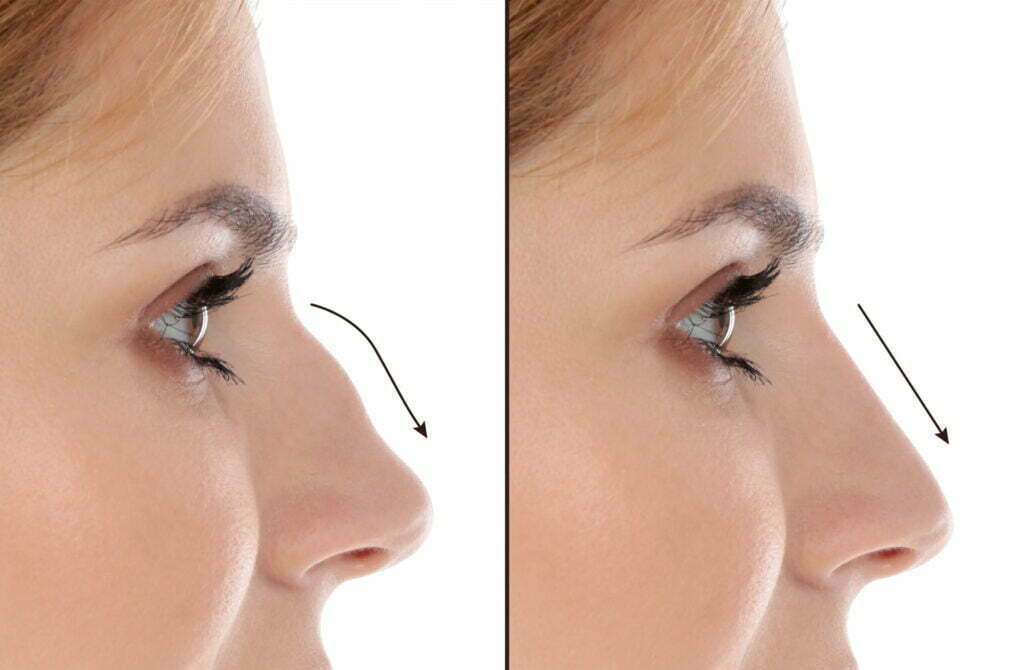
We know that the concept of a perfect nose is subjective and varies depending on one’s cultural, historical, and individual preferences.
However, there are certain characteristics that are generally considered to make a nose aesthetically pleasing. A perfect nose is typically straight and symmetrical, with a defined bridge and a proportional tip that complements the face’s overall proportions. The nostrils should be small and not overly flared, and the angle between the nose and the upper lip should be around 90 degrees. While there is no objective standard for a perfect nose, a balanced and harmonious appearance is generally considered desirable.
While the idea of a perfect nose is subjective, some individuals may choose to undergo rhinoplasty to achieve a nose that aligns with their aesthetic preferences.
After the surgery, the following are the healing stages that you can expect to go through:
The Immediate Aftermath of Your Rhinoplasty Surgery
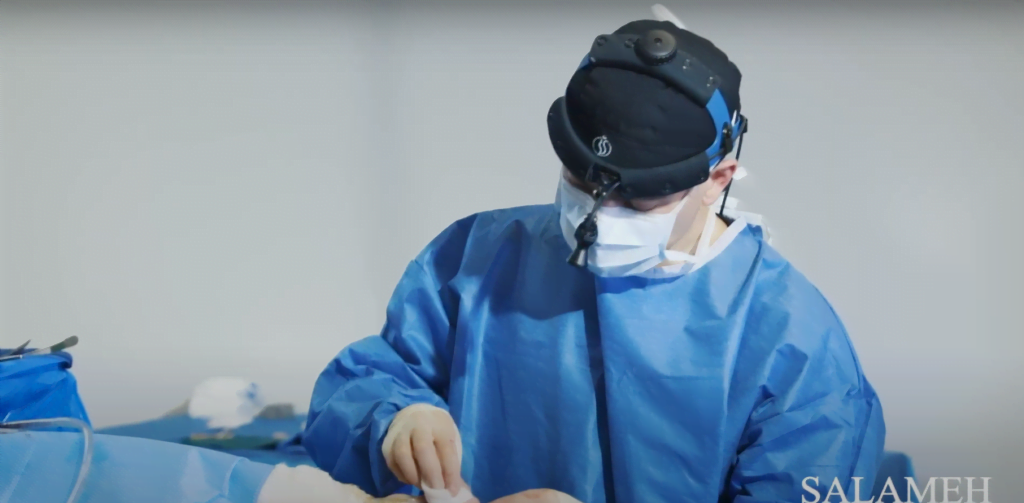
Know that the immediate aftermath of rhinoplasty is a critical period in your healing process. During this time, your body works hard to heal and adjust to the changes made during the surgery.
One of the most common side effects during this stage is swelling and bruising. However, this is something that should bother you as this is entirely normal after rhinoplasty. The swelling can range from mild to severe and last several weeks. You may also experience bruising around the eyes, which can last up to two weeks.
For our patients, we advise managing the swelling and bruising by using cold compresses, elevating their heads while they sleep, and avoiding strenuous activity. We may also prescribe pain medication to help manage any discomfort they may feel.
It’s also important to note that the initial rhinoplasty results may take time to be visible. This is because the nose is still swollen, and the final shape may not be visible until the swelling goes down.
Be reminded that during the immediate aftermath, it’s crucial to follow your surgeon’s post-operative instructions to ensure proper healing. This includes taking all prescribed medication as directed, avoiding strenuous activity, and keeping the surgical site clean and dry.
The First Week Post-surgery
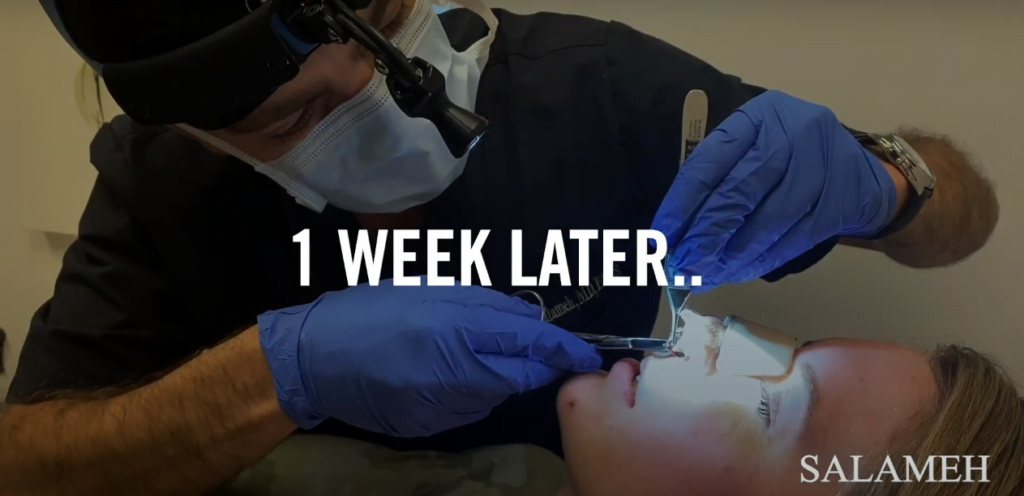
During the first week following a rhinoplasty, the healing process continues as the body adjusts to the changes made during the surgery. During this stage, swelling and bruising may still be present but will begin to subside.
It is also expected to experience changes in breathing during the first week after surgery. This is because the nasal passages have been altered during the procedure and may take time to adjust.
To ensure proper healing and minimize discomfort during the first week, it is important to continue following your surgeon’s post-operative instructions. This may include continuing to use cold compresses, elevating your head while sleeping, and avoiding any strenuous activity.
You will also be instructed to avoid blowing your nose, as this can increase swelling and cause discomfort.
It’s also important to know that you may experience numbness in the nose and upper lip during this stage. This is a normal side effect of the surgery and should improve over time.
The Second Week
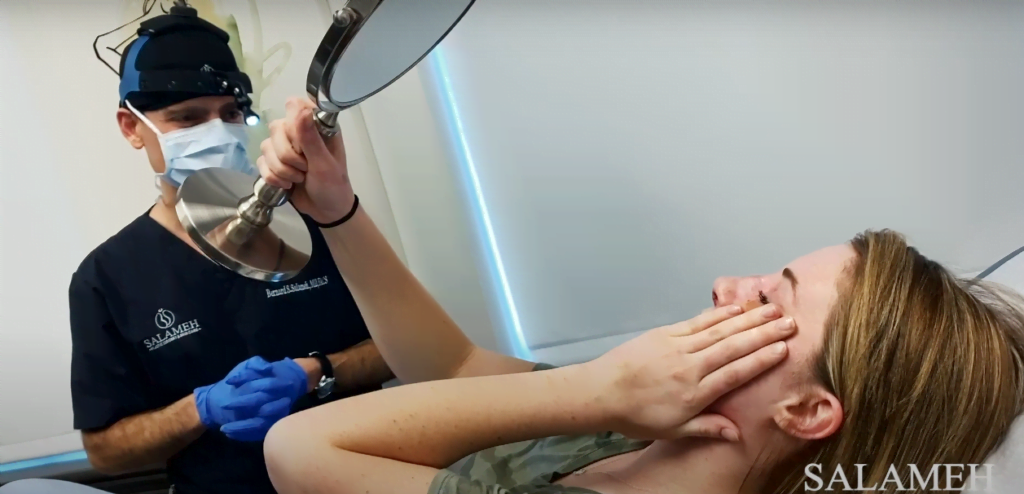
The second week can be an exciting time for individuals who underwent rhinoplasty or nose job.
By this time, after the first week of recovery, you will likely notice a decrease in swelling and bruising around your nose. This is a normal part of the healing process, which means that your body works to repair the tissues affected during the procedure.
As the swelling and bruising continue to subside, you will see a more defined shape to your nose. This may take a little longer to develop fully, but it is an essential step in the healing process.
By the end of the second week, you should be able to resume most of your normal activities. However, it is crucial to avoid any strenuous exercise or other activities that could cause injury to your nose. You should also avoid exposing your nose to direct sunlight and extreme temperatures. It’s also important to follow any specific post-operative instructions your surgeon provides.
The Third Week
Observing our patients’ recovery phases, here’s what we usually notice by the third week:
Further improvement in appearance:
As the healing process continues, patients may notice further improvements in the appearance of their surgical area. Swelling and bruising will continue to subside, revealing the final results of the surgery. It is essential to remember that the healing process can take several months, and the final results may only be evident then.
Finalizing the healing process in achieving a perfect nose:
After the initial recovery period, patients can return to their normal activities and routines. However, it is vital to continue to take care of the surgical area to ensure proper healing. This may include avoiding certain activities or movements that could cause strain or irritation and attending follow-up appointments with the surgeon.
Post-surgery appointments:
After the surgery, patients must attend all of their scheduled follow-up appointments. These appointments allow the surgeon to monitor the healing process and ensure that everything is progressing. They may also enable the patient to ask questions or address any concerns they may have. Additionally, the surgeon may provide instructions for post-surgery care, including what activities should be avoided, how to care for the surgical area, and when to return for additional appointments.
The Fourth Week and Beyond
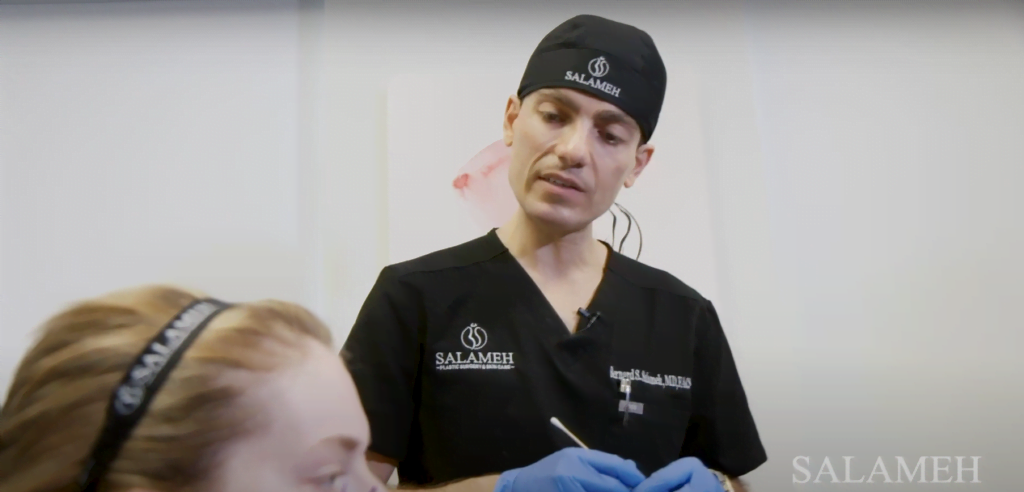
Note that as the healing process continues during this period, patients will begin to see the final results of their surgery. However, it’s essential to keep in mind that the full effects may only be visible several months post-surgery. Also, bear in mind that the final result will vary depending on the type of surgery performed, but patients should expect a significant improvement in their facial appearance.
How to maintain the results of a nose job?
After the surgery, it’s essential to maintain the results achieved through surgery. This may include maintaining a healthy lifestyle, avoiding activities that could cause strain or irritation, and following the post-surgery care instructions provided by the surgeon.
In some cases, patients may also need to schedule regular follow-up appointments with the surgeon to ensure the results are maintained.
Possible revision surgery:
Know that there there are times when patients may need revision surgery to address any issues or complications that may arise after the initial surgery. This could include asymmetry, dissatisfaction with the results, or complications from the initial surgery. If revision surgery is needed, patients should discuss this with their surgeon and understand the risks and benefits of the procedure. It’s also important to remember that revision surgery may be more complicated and take longer to heal than the initial surgery. Hence, again it will be very important to choose highly qualified and experienced board-certified plastic surgeons.
If you’re thinking of getting a rhinoplasty or nose job in Kentucky or Indiana, you can schedule an appointment by filling out our Contact Us form.
Takeaway
The healing process following surgery can be a complex process, with different stages of recovery.
Here’s the summary of the points we made above:
In the initial stage or right after the procedure, patients must expect swelling, bruising, and pain, which will gradually subside as the healing process progresses. As the healing continues, patients may notice further improvements in the appearance of their surgical area and can return to their normal activities.
We also emphasize how important it is for patients to follow the post-surgery instructions provided by their surgeon for proper healing and ensure optimal results. This may include avoiding certain activities, taking prescribed medications, and attending follow-up appointments. Also, by following these instructions, patients can help to minimize the risk of complications and ensure that the healing process goes as smoothly as possible.
Lastly, we have mentioned of how patients should have realistic expectations about the results of their surgery. Surgery can significantly improve appearance, but it may not be able to achieve perfection.
It’s important to discuss expectations with the surgeon before the surgery and have open and honest communication throughout the healing process.
To know more about Rhinoplasty, you may want to read this blog: A NOSE FOR CHANGE: IS RHINOPLASTY RIGHT FOR YOU?

